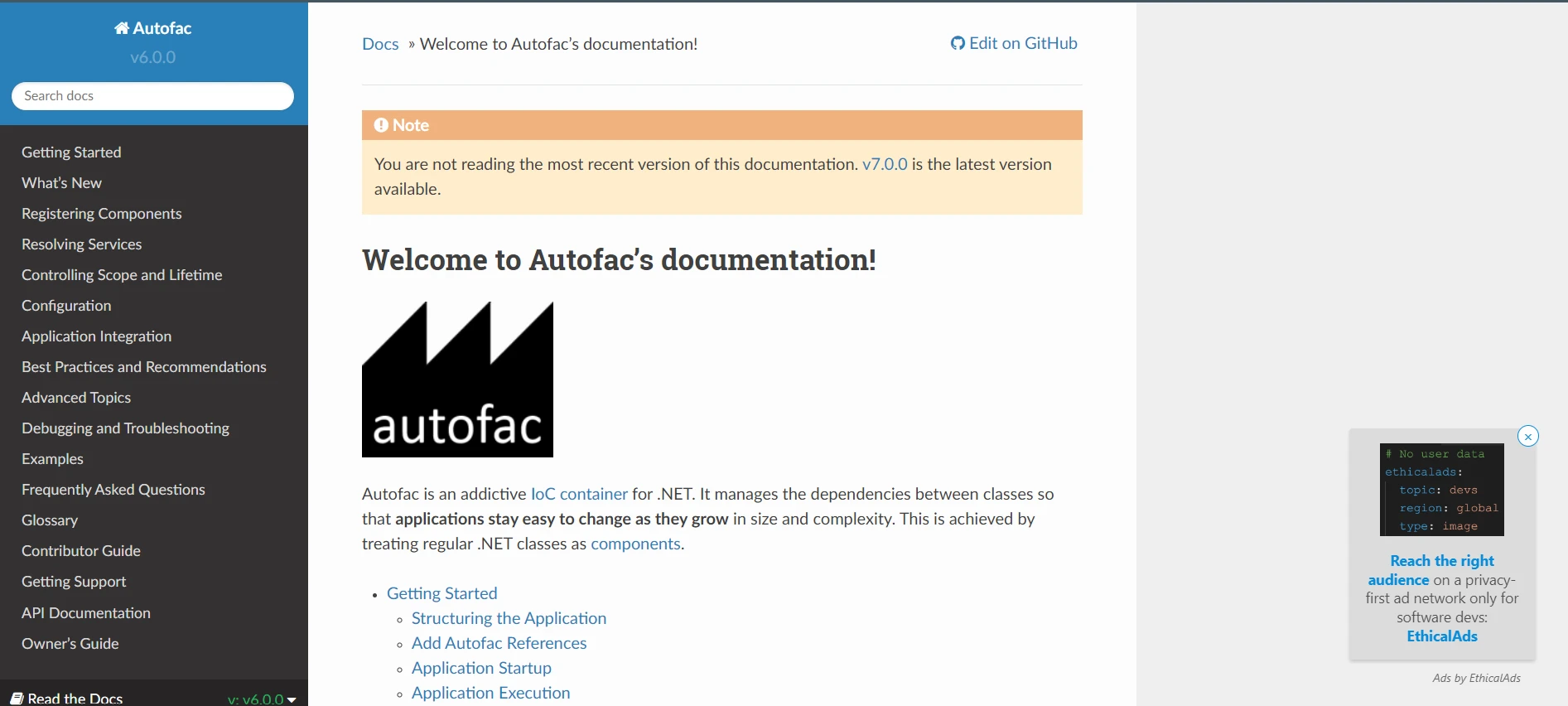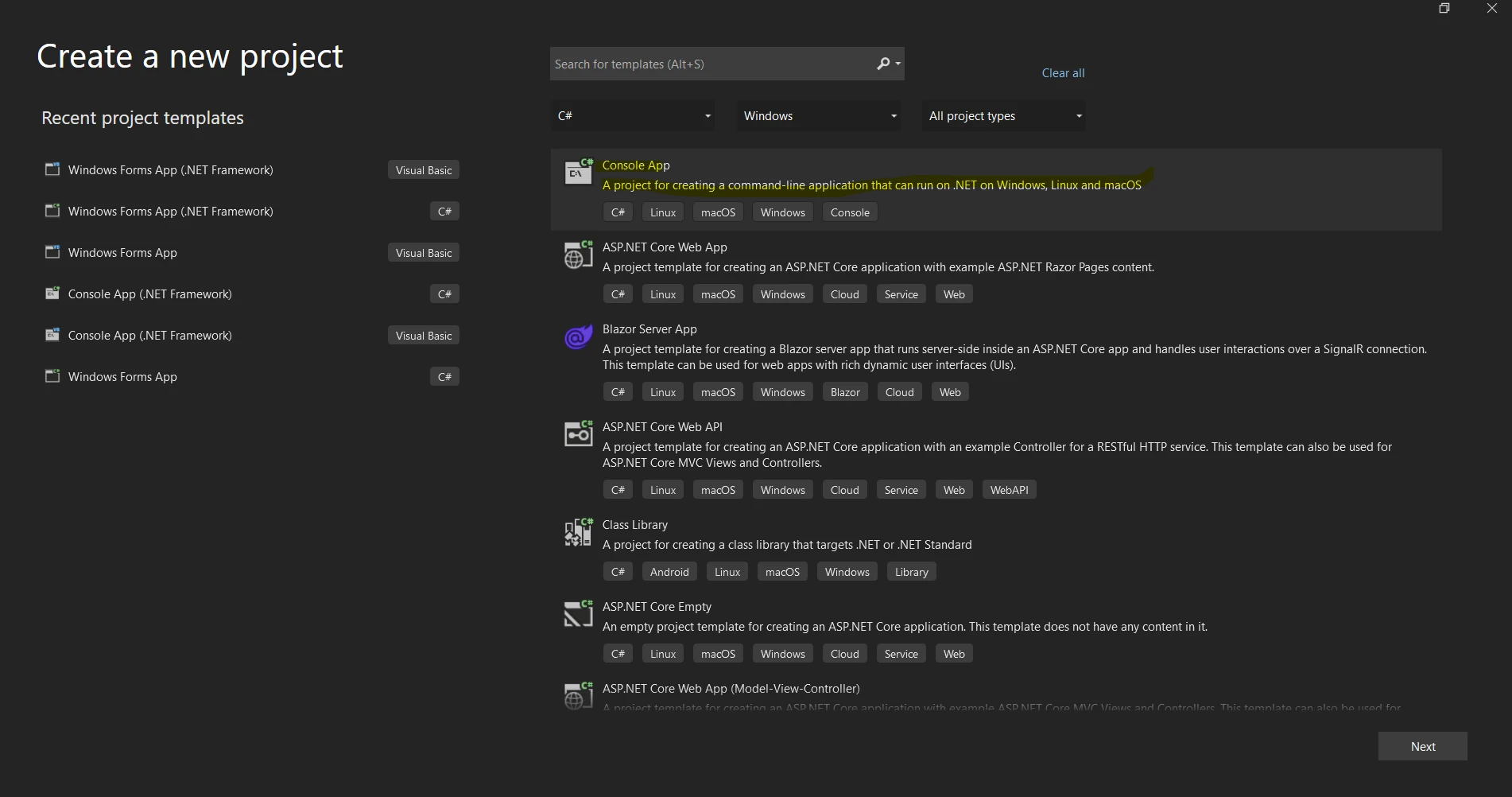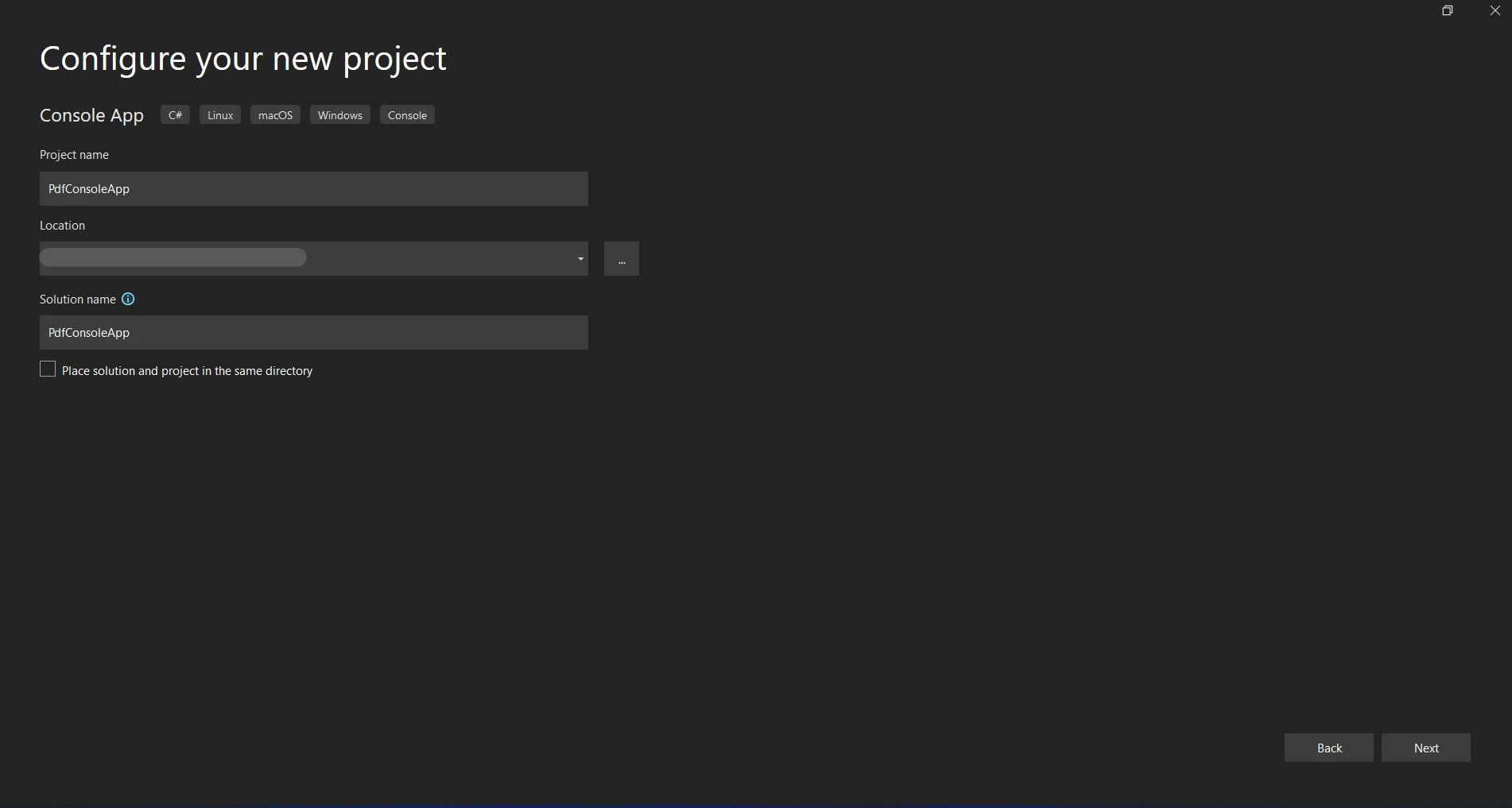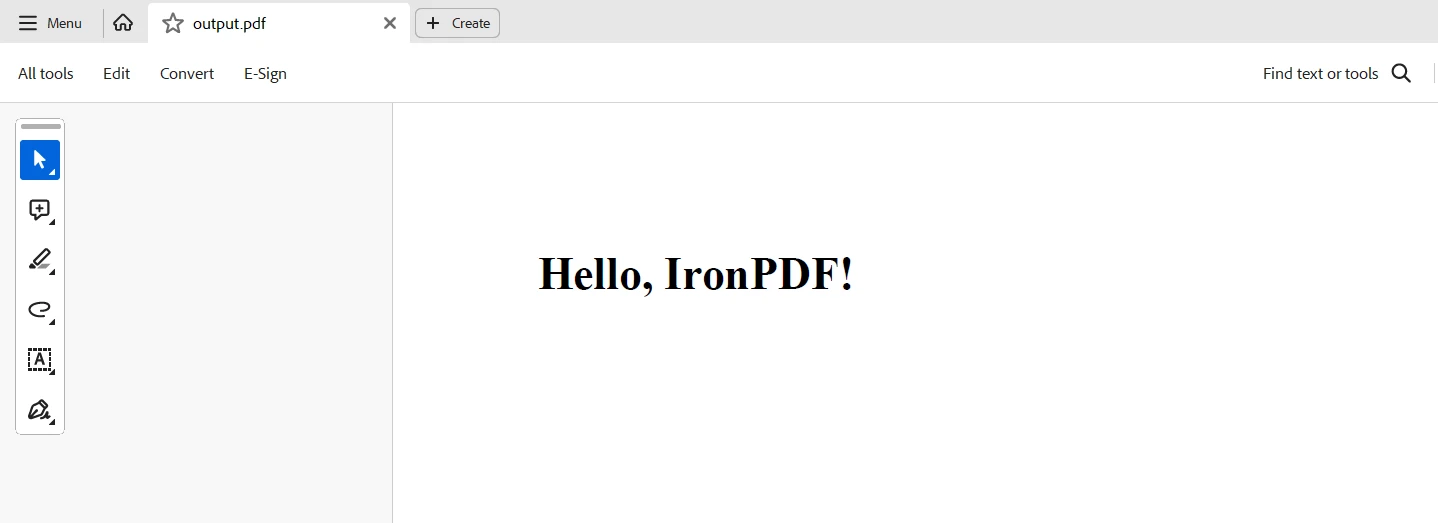Test in production without watermarks.
Works wherever you need it to.
Get 30 days of fully functional product.
Have it up and running in minutes.
Full access to our support engineering team during your product trial
Building scalable and stable apps in the dynamic world of .NET development requires reliable PDF creation and effective dependency injection. Autofac and IronPDF are two potent libraries that address these requirements and give developers the tools they need to greatly improve their applications.
For .NET, Autofac is a well-liked Inversion of Control (IoC) container that facilitates tidy, modular dependency management. Decoupling their code makes it easier for engineers to test and maintain. An application design that is more adaptable and extensible can be achieved by defining how dependencies are resolved using Autofac. Automatic core dependency resolution and identification, support for multiple lifetimes and scopes, and interoperability with several .NET frameworks, core owin support, and libraries are just a few of its many capabilities.
By combining Autofac with IronPDF, programmers can create complex .NET applications by utilizing the advantages of both packages. While IronPDF offers the features required to manage and produce PDF documents effectively, Autofac ensures that your application's components are neatly arranged and simple to test. Together, these enable developers to design feature-rich, scalable, and durable systems that prioritize performance and maintainability.
For .NET applications, Autofac is a powerful and lightweight Inversion of Control (IoC) container. To put it simply, Autofac assists you in managing the dependencies among different parts (classes or services) in your application. It is a member of the family of Internet of Containers (IoC) containers that support Dependency Injection (DI), a design paradigm that encourages loose coupling between classes by giving an external framework control over obtaining dependencies.

Dependency Injection is made easier with Autofac, which lets you inject dependencies into your classes instead of building them from scratch. Explicitly declaring dependencies encourages loose coupling and improves testability.
There are various methods provided by Autofac for registering components (classes or services) with the container. For more complicated circumstances, you can utilize conventions or modules and register components by type, instance, or delegate.
For registered components, Autofac offers many lifetimes: Instance Per Dependency (new instance per request), Instance Per Lifetime Scope (one instance per request or session), Singleton (one instance per container), and more. Thanks to this flexibility, you can decide when and for how long to hold instances.
Once registered, Autofac can automatically resolve dependencies between components. It eliminates boilerplate code and improves your program's maintainability by comprehending the dependencies among your components and ensuring that they are supplied when required.
Popular .NET frameworks and libraries, such as ASP.NET Core, ASP.NET MVC, Web API, WCF, and web forms integration, are easily integrated with Autofac. To simplify configuration and usage within these frameworks, it offers extension points and integration packages.
Autofac facilitates modular design utilizing nested containers and modules. Modules facilitate code reuse by enabling the grouping of related setups and components, which helps manage large applications.
Autofac supports integration with FakeItEasy, enabling effortless mocking of dependencies for unit testing. This integration facilitates the creation of fake objects and mock implementations, ensuring robust and reliable testing environments.
Autofac provides built-in support for multi-tenant applications, allowing different components to coexist and be resolved based on tenant-specific contexts. This capability is crucial for applications serving multiple clients or environments with distinct configurations.
Autofac enables visualization of component relationships and dependencies through Dot graph visualization. This feature aids in understanding and optimizing the composition of the application's dependency graph, enhancing transparency and troubleshooting.
Autofac integrates seamlessly with Moq, another popular mocking framework for Dot NET. This integration simplifies the creation and management of mock objects during unit testing, ensuring that dependencies behave as expected within controlled testing scenarios.
Advanced capabilities in Autofac include interception (to add cross-cutting concerns to components, such as caching or logging), decorators (to transparently modify component behavior), and support for keyed services and metadata (to distinguish implementations based on context).
With Autofac's extensive configuration options, you can configure the container using configuration builders, XML configuration files, or programmatic code. It may, therefore, be adjusted to various deployment conditions and preferences.
Multiple processes are involved in creating and configuring Autofac in a .NET application: container setup, component and startup class registration, lifespan management, and application framework integration. Here is a basic how-to for using Autofac:
Creating a console project in Visual Studio is a simple process. Use these easy steps to launch a Console Application in the Visual Studio environment:
Make sure you have installed Visual Studio on your PC before using it.
Select File, then Project, following the New option.

From the following list of project template references, you can choose the "Console App" or "Console App (.NET Core)" template.
Please complete the "Name" field to give your project a name.

Decide on a location to store the project.
Clicking "Create" will open the Console application project.

First, make sure your project has the Autofac package loaded. The NuGet Package Manager Console can be used to install it:
Install-Package AutofacInstall-Package AutofacIRON VB CONVERTER ERROR developers@ironsoftware.comConfigure and construct the Autofac container in your application's startup code (Program.cs for console apps, Global.asax.cs for ASP.NET apps, or Startup.cs for ASP.NET Core apps):
using Autofac;
using System;
public class Program
{
public static void Main(string[] args)
{
// Initialize Autofac container
var container = ConfigureContainer();
// Resolve your main application entry point or start your app
using (var scope = container.BeginLifetimeScope())
{
var app = scope.Resolve<MyApplication>(); // Resolve your main application class
app.Run();
}
}
private static IContainer ConfigureContainer()
{
var builder = new ContainerBuilder();
// Register components
builder.RegisterType<MyService>().As<IMyService>().InstancePerLifetimeScope();
// Add more registrations as needed
builder.RegisterType<MyApplication>().UsingConstructor(typeof(IMyService));
// Build the Autofac container
return builder.Build();
}
}
public class MyApplication
{
private readonly IMyService _myService;
public MyApplication(IMyService myService)
{
_myService = myService;
}
public void Run()
{
// Use _myService and other resolved dependencies here
_myService.DoSomething();
Console.WriteLine("Application is running...");
}
}
public interface IMyService
{
void DoSomething();
}
public class MyService : IMyService
{
public void DoSomething()
{
Console.WriteLine("MyService is doing something...");
}
}using Autofac;
using System;
public class Program
{
public static void Main(string[] args)
{
// Initialize Autofac container
var container = ConfigureContainer();
// Resolve your main application entry point or start your app
using (var scope = container.BeginLifetimeScope())
{
var app = scope.Resolve<MyApplication>(); // Resolve your main application class
app.Run();
}
}
private static IContainer ConfigureContainer()
{
var builder = new ContainerBuilder();
// Register components
builder.RegisterType<MyService>().As<IMyService>().InstancePerLifetimeScope();
// Add more registrations as needed
builder.RegisterType<MyApplication>().UsingConstructor(typeof(IMyService));
// Build the Autofac container
return builder.Build();
}
}
public class MyApplication
{
private readonly IMyService _myService;
public MyApplication(IMyService myService)
{
_myService = myService;
}
public void Run()
{
// Use _myService and other resolved dependencies here
_myService.DoSomething();
Console.WriteLine("Application is running...");
}
}
public interface IMyService
{
void DoSomething();
}
public class MyService : IMyService
{
public void DoSomething()
{
Console.WriteLine("MyService is doing something...");
}
}IRON VB CONVERTER ERROR developers@ironsoftware.comComponents in Autofac register with the ContainerBuilder. The service (interface or base class) and its implementation are specified by you:
var builder = new ContainerBuilder();
// Register components
builder.RegisterType<MyService>().As<IMyService>().InstancePerLifetimeScope();
// Add more registrations as needed
builder.RegisterType<MyApplication>().UsingConstructor(typeof(IMyService));
// Build the Autofac container
return builder.Build();var builder = new ContainerBuilder();
// Register components
builder.RegisterType<MyService>().As<IMyService>().InstancePerLifetimeScope();
// Add more registrations as needed
builder.RegisterType<MyApplication>().UsingConstructor(typeof(IMyService));
// Build the Autofac container
return builder.Build();IRON VB CONVERTER ERROR developers@ironsoftware.comMyService is logged in as IMyService here. Depending on your application's needs, you can register numerous components and specify lifetimes (e.g., InstancePerLifetimeScope, SingleInstance, InstancePerDependency).

Integrating IronPDF for PDF production and Autofac for dependency injection is the first step in using both libraries in a C# application. The following is a detailed instruction that will assist you in configuring Autofac with IronPDF:
For creating, reading, and editing PDF documents in C# programs, there is a robust .NET library called IronPDF. It lets developers create PDFs from HTML, CSS, and JavaScript content, giving them an easy way to produce high-quality, print-ready documents programmatically. Among the crucial features are the ability to watermark, create headers and footers, split and merge PDFs, and convert HTML to PDF. There are many applications that IronPDF can be used for because it supports both the .NET Framework and .NET Core.
Because PDFs have extensive documentation and are easy to integrate, developers may quickly incorporate them into their projects. IronPDF handles complex layouts and styling with ease, ensuring that the output PDFs closely resemble the original HTML text.

PDF Generation from HTML
Convert HTML, CSS, and JavaScript to PDF. It supports two modern web standards: media queries and responsive design. This is helpful for using HTML and CSS to dynamically decorate PDF invoices, reports, and documents.
PDF Editing
Text, images, and other types of material can be added to already-existing PDFs. Extract text and images from PDF files. merge many PDFs into a single file. Split up PDF files into several documents. Add headers, footers, annotations, and watermarks.
PDF Conversion
Convert Word, Excel, and image files, among other file types, to PDF. Converting PDF to image (PNG, JPEG, etc.).
Performance and Reliability
In industrial contexts, high performance and reliability are desirable design attributes. efficiently handles large document management.
Install the IronPDF package to get the tools you need to work with PDFs in .NET programs.
Install-Package IronPDFInstall-Package IronPDF'INSTANT VB TODO TASK: The following line uses invalid syntax:
'Install-Package IronPDFSet up Autofac in your application to handle dependencies, which include parts connected to IronPDF.
using Autofac;
using IronPdf;
using System;
public class Program
{
public static void Main(string[] args)
{
// Initialize Autofac container
var container = ConfigureContainer();
// Resolve your main application entry point or start your app
using (var scope = container.BeginLifetimeScope())
{
var app = scope.Resolve<MyApplication>(); // Resolve your main application class
app.Run();
}
}
private static IContainer ConfigureContainer()
{
var builder = new ContainerBuilder();
// Register components
builder.RegisterType<PdfGenerator>().As<IPdfGenerator>().InstancePerLifetimeScope();
// Add more registrations as needed
// Build the Autofac container
return builder.Build();
}
}
public class MyApplication
{
private readonly IPdfGenerator _pdfGenerator;
public MyApplication(IPdfGenerator pdfGenerator)
{
_pdfGenerator = pdfGenerator;
}
public void Run()
{
// Use _pdfGenerator and other resolved dependencies here
Console.WriteLine("Application is running...");
// Example usage of IronPDF for generating a PDF
var htmlContent = "<html><body><h1>Hello, IronPDF!</h1></body></html>";
var pdfBytes = _pdfGenerator.GeneratePdf(htmlContent);
using (var fs = new FileStream("output.pdf", FileMode.Create, FileAccess.Write))
{
fs.Write(pdfBytes, 0, pdfBytes.Length);
}
// Save or further process the generated PDF bytes
}
}
public interface IPdfGenerator
{
byte[] GeneratePdf(string htmlContent);
}
public class PdfGenerator : IPdfGenerator
{
public byte[] GeneratePdf(string htmlContent)
{
var renderer = new IronPdf.ChromePdfRenderer();
var pdfDocument = renderer.RenderHtmlAsPdf(htmlContent);
Console.WriteLine("Pdf generation completed");
return pdfDocument.BinaryData;
}
}using Autofac;
using IronPdf;
using System;
public class Program
{
public static void Main(string[] args)
{
// Initialize Autofac container
var container = ConfigureContainer();
// Resolve your main application entry point or start your app
using (var scope = container.BeginLifetimeScope())
{
var app = scope.Resolve<MyApplication>(); // Resolve your main application class
app.Run();
}
}
private static IContainer ConfigureContainer()
{
var builder = new ContainerBuilder();
// Register components
builder.RegisterType<PdfGenerator>().As<IPdfGenerator>().InstancePerLifetimeScope();
// Add more registrations as needed
// Build the Autofac container
return builder.Build();
}
}
public class MyApplication
{
private readonly IPdfGenerator _pdfGenerator;
public MyApplication(IPdfGenerator pdfGenerator)
{
_pdfGenerator = pdfGenerator;
}
public void Run()
{
// Use _pdfGenerator and other resolved dependencies here
Console.WriteLine("Application is running...");
// Example usage of IronPDF for generating a PDF
var htmlContent = "<html><body><h1>Hello, IronPDF!</h1></body></html>";
var pdfBytes = _pdfGenerator.GeneratePdf(htmlContent);
using (var fs = new FileStream("output.pdf", FileMode.Create, FileAccess.Write))
{
fs.Write(pdfBytes, 0, pdfBytes.Length);
}
// Save or further process the generated PDF bytes
}
}
public interface IPdfGenerator
{
byte[] GeneratePdf(string htmlContent);
}
public class PdfGenerator : IPdfGenerator
{
public byte[] GeneratePdf(string htmlContent)
{
var renderer = new IronPdf.ChromePdfRenderer();
var pdfDocument = renderer.RenderHtmlAsPdf(htmlContent);
Console.WriteLine("Pdf generation completed");
return pdfDocument.BinaryData;
}
}Imports Autofac
Imports IronPdf
Imports System
Public Class Program
Public Shared Sub Main(ByVal args() As String)
' Initialize Autofac container
Dim container = ConfigureContainer()
' Resolve your main application entry point or start your app
Using scope = container.BeginLifetimeScope()
Dim app = scope.Resolve(Of MyApplication)() ' Resolve your main application class
app.Run()
End Using
End Sub
Private Shared Function ConfigureContainer() As IContainer
Dim builder = New ContainerBuilder()
' Register components
builder.RegisterType(Of PdfGenerator)().As(Of IPdfGenerator)().InstancePerLifetimeScope()
' Add more registrations as needed
' Build the Autofac container
Return builder.Build()
End Function
End Class
Public Class MyApplication
Private ReadOnly _pdfGenerator As IPdfGenerator
Public Sub New(ByVal pdfGenerator As IPdfGenerator)
_pdfGenerator = pdfGenerator
End Sub
Public Sub Run()
' Use _pdfGenerator and other resolved dependencies here
Console.WriteLine("Application is running...")
' Example usage of IronPDF for generating a PDF
Dim htmlContent = "<html><body><h1>Hello, IronPDF!</h1></body></html>"
Dim pdfBytes = _pdfGenerator.GeneratePdf(htmlContent)
Using fs = New FileStream("output.pdf", FileMode.Create, FileAccess.Write)
fs.Write(pdfBytes, 0, pdfBytes.Length)
End Using
' Save or further process the generated PDF bytes
End Sub
End Class
Public Interface IPdfGenerator
Function GeneratePdf(ByVal htmlContent As String) As Byte()
End Interface
Public Class PdfGenerator
Implements IPdfGenerator
Public Function GeneratePdf(ByVal htmlContent As String) As Byte() Implements IPdfGenerator.GeneratePdf
Dim renderer = New IronPdf.ChromePdfRenderer()
Dim pdfDocument = renderer.RenderHtmlAsPdf(htmlContent)
Console.WriteLine("Pdf generation completed")
Return pdfDocument.BinaryData
End Function
End ClassThe abstraction/interface for creating PDFs is called IPdfGenerator. PdfGenerator is an implementation of IPdfGenerator that creates PDFs from HTML material using IronPDF's ChromePdfRenderer class. Autofac is configured to register PdfGenerator as the IPdfGenerator implementation through the ConfigureContainer function. By using constructor injection to inject the IPdfGenerator dependency into the MyApplication class, PdfGenerator (IronPDF) can be used by MyApplication with ease.

Now, whenever IPdfGenerator is injected, you may access IronPDF's functionality (HtmlToPdf in this case) through PdfGenerator. Modify PdfGenerator to meet the needs of your application; for example, add headers and footers or adjust the PDF parameters. These tutorials will show you how to use Autofac for dependency injection and incorporate IronPDF for strong PDF production into your C# application. Based on your project's particular needs and architecture, modify the configurations and registrations.

In summary, using Autofac and IronPDF in a C# application offers a potent combination for effectively managing dependencies and producing PDF documents. By helping you use the concepts of Dependency Injection (DI) and Inversion of Control (IoC), Autofac improves your program's modularity, testability, and maintainability.
Autofac and IronPDF enable developers to create feature-rich, scalable apps with smooth PDF creation, net core integration, and easy dependency management. This integration guarantees that your application follows the best software design and architecture practices while increasing productivity.
Essentially, using Autofac in conjunction with IronPDF for your C# applications creates a unified development environment where PDF production and dependency management are effectively managed, freeing you to concentrate more on adding value to your application's functionality.
By including IronPDF and IronSoftware, you can round out your toolkit for .NET development by conducting OCR, interacting with barcodes, creating PDFs, linking with Excel, and more. Combining IronSoftware's Licensing delivers more online apps and capabilities and more efficient development for a starting price of $749.
Developers are better equipped to decide which model is best practice and optimal if there are clear license options tailored to the project's particular requirements. These advantages enable developers to handle a variety of problems in a transparent, efficient, and easily integrated manner.